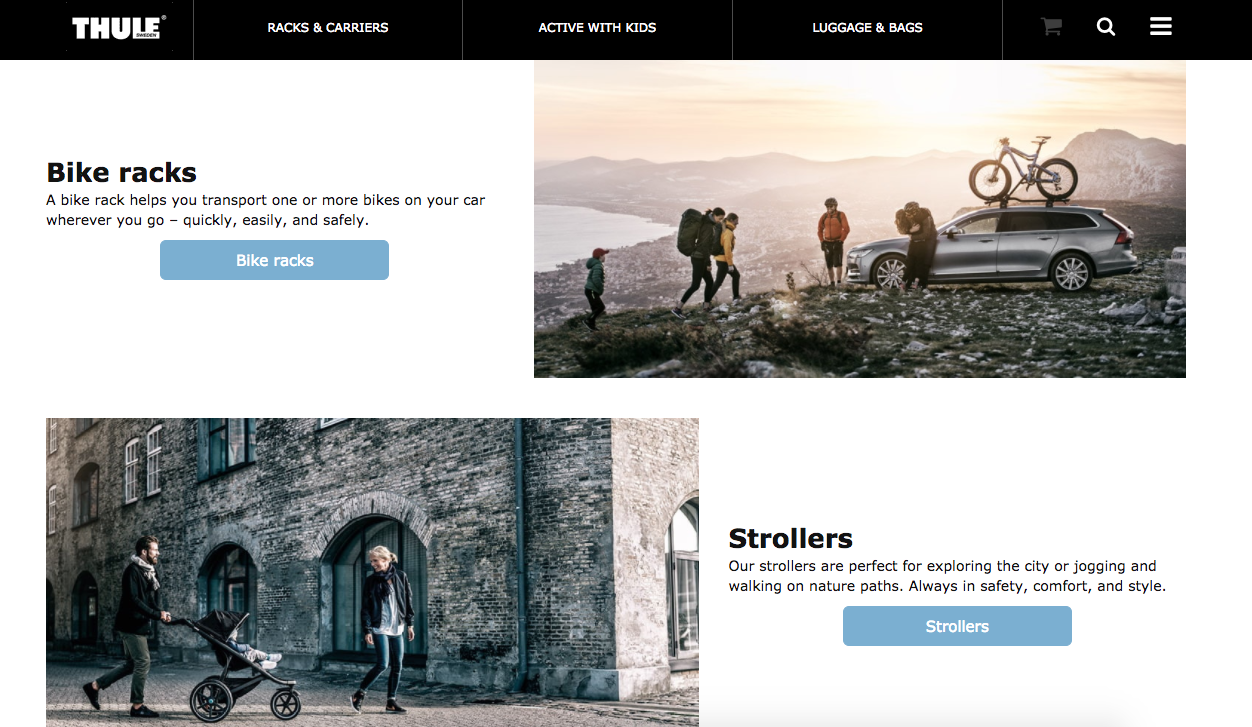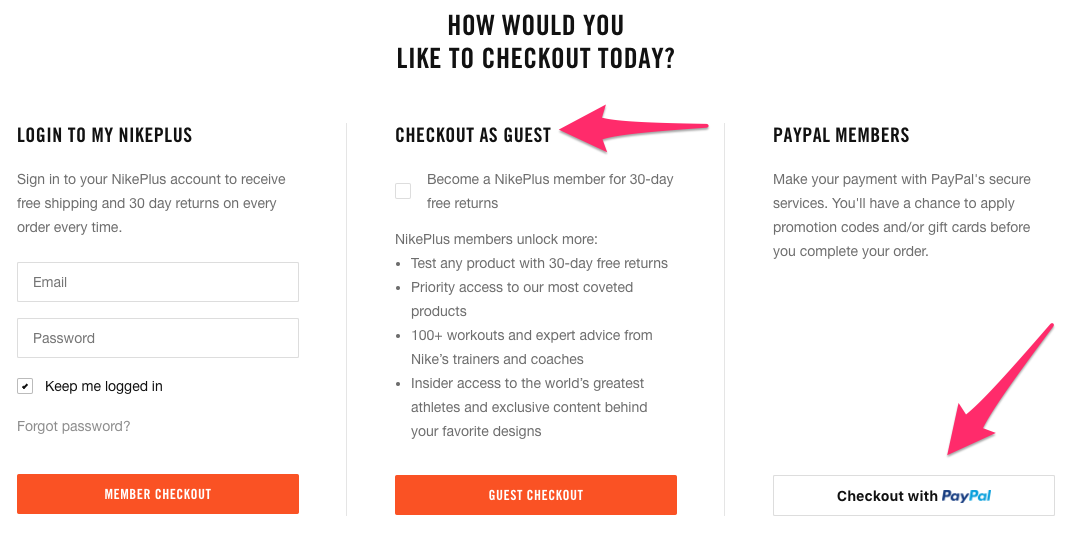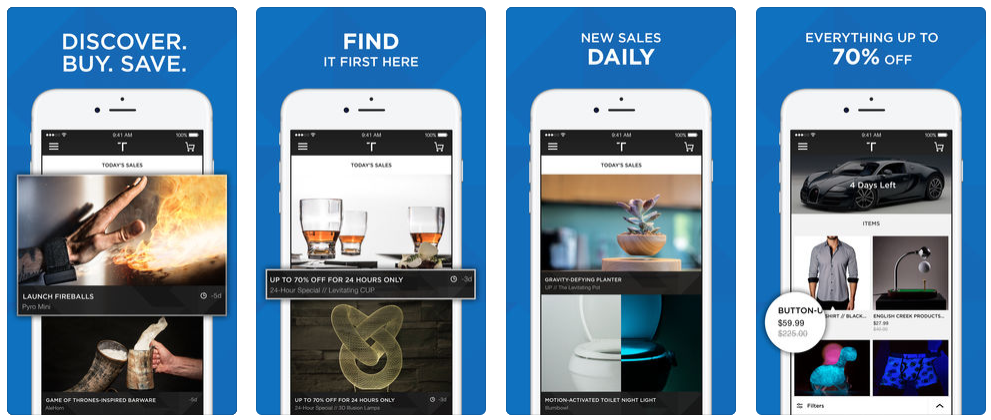Do your conversion rates need a boost?
Nobody has a conversion rate that’s 100%. I think it’s safe to say that no matter how successful your company is, your conversions can always be improved.
Recognizing this is half the battle, but you’ll need to actually implement some changes if you want to see an increase. Just hoping for more conversions isn’t going to cut it.
Here’s another mistake I see businesses make. They confuse a conversion problem with a traffic problem.
Sure, driving more traffic to your website is great. I encourage you to do this. You may get more sales, but it won’t necessarily change your conversion rate.
Ecommerce websites need to focus on their website layouts. I’ve told you before that websites with simple designs have higher conversion rates.
But you’ve also got to simplify your checkout process.
If you analyze each phase of this process, you may find certain elements that are actually driving customers away.
Fortunately, I’ve helped businesses with this problem before. I want to share some of my most successful strategies with you.
Here’s how you need to approach your checkout process to maximize conversions.
Take a look at your shopping cart abandonment rates
Over 69% of shopping carts get abandoned. That number is astonishingly high.
According to Statista, these are the top reasons why consumers abandon carts:

Take a look at these figures and see if your existing checkout process has any of these hindering components. Are you encouraging customers to just browse?
It’s clear based on this data that lots of customers may add something to their shopping carts without any intention of buying anything. I know I’m guilty of this myself as well.
You need to find ways to convert these window shoppers into customers. I recommend trying to tastefully implement scarcity tactics:
- create a sense of urgency
- use FOMO (fear of missing out)
- run promotions with short deadlines
- add popups with promotional offers
These tips will help you reduce abandonment rates and get more conversions.
Shopping cart abandonment is an epidemic that needs to be addressed. You can send your customers an email reminding them they forgot something in their carts as part of fixing the problem.
But looking at your shopping cart abandonment rate is only the first step of optimizing your checkout process.
You should be constantly tracking this number to see whether the changes you’re implementing are making a difference. Keep referring back to it as you go through this guide.
Eliminate unnecessary steps
If your checkout process is long and complicated, it’ll have a negative impact on your conversion rates. Make sure you’re only getting information that’s required to complete the sale.
Consumers are busy. The more steps you make them go through to buy something, the more time they have to realize they really don’t want it.
But if you can simplify your checkout procedure down to a few steps, the customer won’t have time to second-guess their decision.
That’s why the number of form fields should be as low as possible.

As you can see from the graph above, the fewer form fields, the higher checkout performance and usability. As a result, your checkout process will have better conversion rates.
But look at how quickly those numbers drop when the form fields become too long. Those yield a poor UX performance, which can negatively impact conversions.
Ask yourself this question:
What information do I really need to complete this sale?
- customer’s name
- shipping address
- email address (to send confirmation)
- billing information
That’s really it. You don’t need to find out their favorite hobby or their mother’s maiden name.
Just stick with the bare minimum, and you’ll see your conversion rates rise.
Encourage customer profiles, but don’t force it
Some ecommerce websites force customers to create profiles before they can buy something. While I can see the reasoning behind this strategy, it’s killing your conversions.
Look, I get it. From a marketing perspective, you want as much information about your customers as possible.
Once they create an account, you’ll have their name, location, and email address to which you can send more promotional info.
That’s all great. But if you had to choose, wouldn’t you rather have their money?
Not everyone wants a customer profile.
Over 48% of online retailers said a guest checkout was the most important factor to increasing shopping cart conversion rates on their websites.

This was the second highest response on the list, trailing only behind free shipping.
Profile creation piggybacks on our last point as well. You want the process to be as quick and simple as possible. Going through a long process will turn customers away.
But you can encourage your customers to create a profile in other, subtle, ways. For example, your “create a profile” CTA button can be larger and more prominent than the “checkout as a guest” button.
Or you can send the customer an email after they complete the checkout process encouraging them to create a profile.
This message can be part of your actionable drip campaign, notifying customers of:
- their order confirmation
- their order getting shipped
- their order being delivered.
You could add a promotion to one of these emails offering a discount off their next purchase if they create a profile.
Just don’t make it a requirement to buy something.
Focus on your top benefits
Besides the product, what else does the customer get when they buy something from your website? There are certain things you can do to add the perceived value of the purchase.
Here’s what I mean.
As I’ve mentioned, not everyone comes to your website with the intention of buying something. But while they are browsing, something might catch their attention.
They may want to buy it, but they want to make sure they aren’t stuck with it if they change their mind later. That’s why you should clearly state your return policy.
Take a look at this example from Lululemon:

When you’re browsing on their website, you can clearly see at all times they offer free shipping and free returns. Their customers know they can get the item delivered free and send it back without any problems.
Obviously, you don’t want items to be returned. Don’t worry, they probably won’t be. In fact, according to the National Retail Federation, about 8% of all purchases get returned.
But just giving your customers the peace of mind can be enough to drive the sale.
In addition to your shipping and return policies, make sure you highlight any other features your company offers. Some things to consider:
- warranty information
- secure checkout
- social proof of the product
- any differentiating features.
One of these elements can turn a “window shopper” into a paying customer.
Learn how to use images
Believe it or not, pictures can help improve your conversion rates. Instead of just listing your products, show the customer what they’re buying.
While you may have an image or two of your products on your ecommerce shopping page, make sure that image shows up in the shopping cart.
Why?
This can help remind the consumer what they’re buying and reinforce their decision. Plus, it’s much more appealing than just reading some text on a page.
Here’s an example from the REI website:

The consumer gets reminded of exactly what they added to their cart. This could also help avoid any confusion or mix-ups down the road if they selected the wrong color, size, etc.
When they see a visual confirmation of the product they want, psychologically they’ll feel more comfortable about completing the purchase.
Faces also help improve your conversion rates.
According to a recent case study, conversions jumped from 3.7% to 5.5% when an animated picture of a phone was replaced with the face of a customer service representative.
Include images of people on your website. They could be wearing your product, using your product, or be beside your product.
Check out this example from the Macy’s homepage:

Notice it shows a person, and that person is looking at the promotional information and the CTA button.
We’ve already established consumers are drawn to faces. In this case, you’d look at the model’s face and then follow his gaze directly toward the text.
This is a great method for increasing conversions.
Simplify the overall design of your website
In addition to simplifying your checkout process, you should also try to clean up your entire website.
If your products are displayed in a cluttered manner, the consumers will feel overwhelmed. They won’t be able to find what they’re looking for, and your conversion rates will suffer.
While you may have hundreds or potentially even thousands of items for sale on your website, you don’t need to cram all of them on to one page.
Less is more.
Let’s look at an example so you can see what I’m talking about. Here is the homepage for Thule:

There are only five different places the consumer can click to start navigating through products. On the top header, they can select:
- racks & carriers
- active with kids
- luggage & bags
They’ve also got some options within the main body of the page for:
- bike racks
- strollers
That’s it.
Now, as you continue to scroll, you’ll see more options that follow the same format as these two pictures above. But at no time do you ever see more than two pictures and two CTA buttons on the screen at once.
This simple design makes it easy for shoppers to find exactly what they’re looking for.
Give your customers lots of payment options
Some payment options may be more beneficial to your company than others. I completely understand this.
One credit card company may charge higher transaction fees than others, but that doesn’t mean you shouldn’t accept that method of payment.
Recognize your customers have preferences. Certain payment options may give them better reward points or bonus miles over others.
If they want something but can’t buy it with their favorite card, they’ll just buy it from a different retailer instead.
You should accept newer and unconventional types of payment as well. In addition to accepting all major credit cards and debit cards, consider using:
- PayPal
- Venmo
- Apple Pay
I want to show you an example of this. Here’s a screenshot from the Nike website:

If you look at the bottom right corner of the screenshot above, you’ll see they allow their customers to check out using PayPal.
This could appeal to people who have a high PayPal balance and who want to use it for purchases. Accepting PayPal can also help eliminate concerns from customers who may be worried about their credit card information getting stolen.
The reason why I used this example from Nike is because it also highlights another concept I mentioned earlier.
Although they encourage customers to create a profile, they allow them to continue the checkout as guests. Even under the guest checkout area, it shows all the benefits of becoming a member.
To join, all you need to do is check off a box and proceed.
Another quick point about your payment methods. I recommend asking for payment as the last step of the checkout procedure.
By now, the customer has already invested some time into providing other information, so they’ll be more likely to continue. Asking for their payment first could drive them away.
Don’t forget about mobile shoppers
Retailers always need to keep mobile shoppers in mind.
In 2017, 34.5% of ecommerce sales came from mobile devices. That number is projected to reach 54% by 2021.
Your checkout process needs to be optimized for mobile devices. Make sure your site is mobile friendly.
You could even consider creating a mobile app for a checkout process to minimize friction even further.
Touch of Modern is a great example of a successful retail mobile application:

You can learn a lot about getting high conversions from their business model.
They get between 150,000 and 200,000 new downloads every month. More than half of their customers are repeat shoppers. Nearly two-thirds of their total sales come from their mobile application.
Those numbers are incredible.
The reason why this app is so successful is because they use daily flash sales and store all their customers’ data on the app, making the checkout process lightning fast.
Customers don’t have to re-input all of their credit card information and shipping addresses every time they want to buy something.
The reduced friction results in high conversions.
Conclusion
Getting higher conversions isn’t that difficult. It just takes some effort.
As you can see from everything I talked about in this article, these methods aren’t really too extreme. They are also fairly easy to implement.
First, analyze your shopping cart abandonment rates.
Next, eliminate any unnecessary steps in your checkout process. Stick to the basics and only ask for information required for a sale.
Encourage shoppers to create a customer profile, but don’t force them to.
Highlight your top benefits. Use images throughout the checkout process to confirm what the customer is buying.
Make sure you offer many different payment options as well.
Don’t forget about mobile customers. Your website needs to be optimized for mobile devices. You may even consider creating a mobile app for your ecommerce store.
If you follow these tips to simplify your checkout process, you’ll get significantly higher conversion rates.
What changes do you need to make to your checkout process to reduce abandonment rates and get more conversions?
from Quick Sprout http://ift.tt/2swniFt
No comments:
Post a Comment